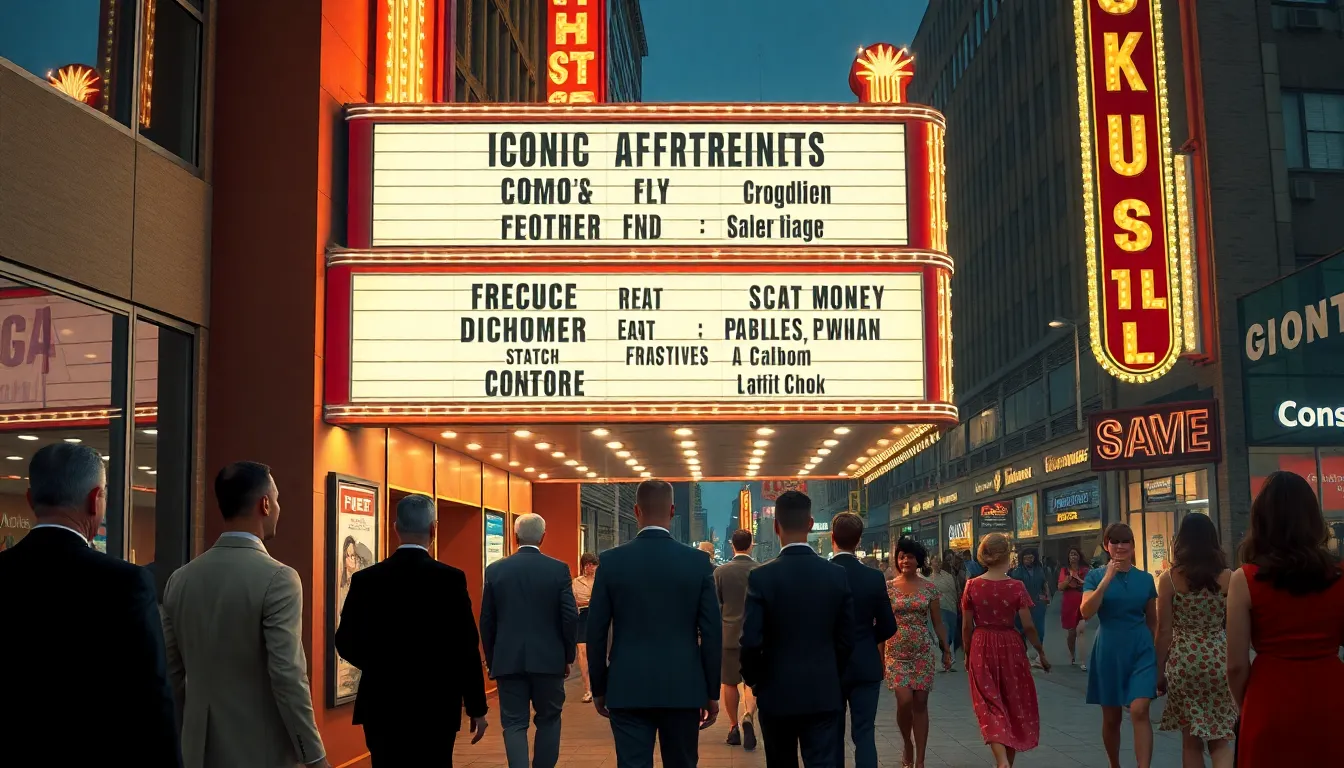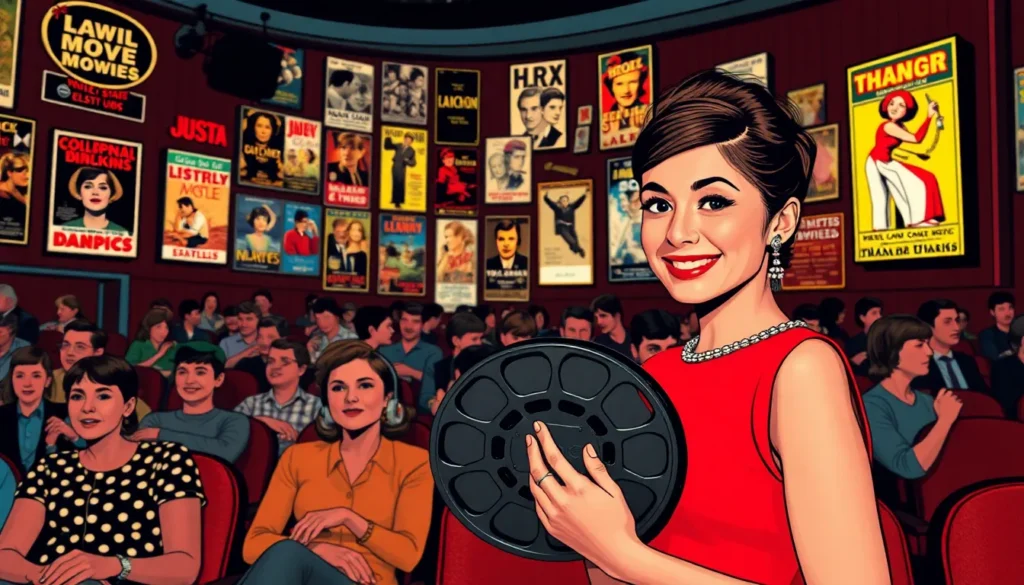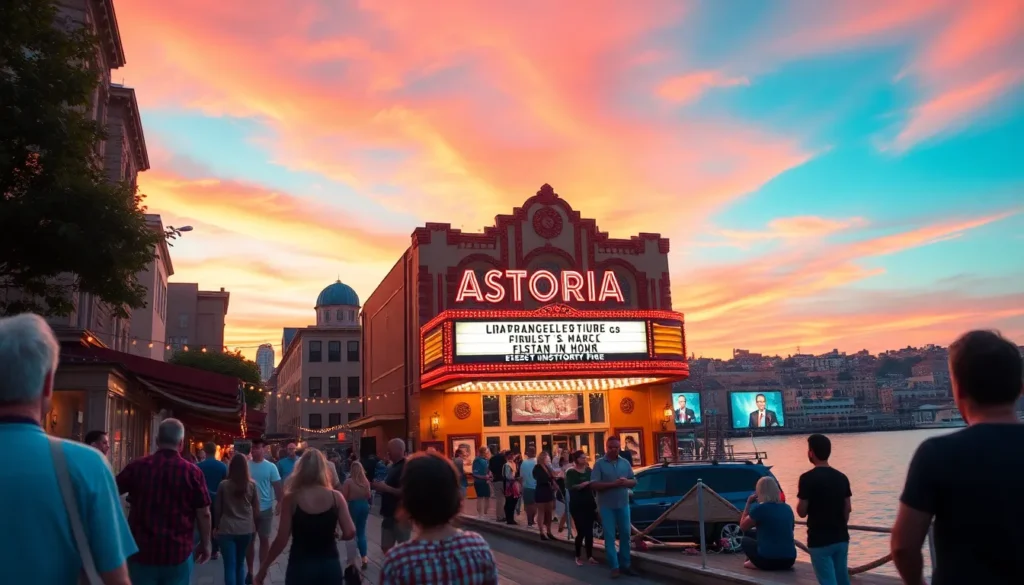The 1960s was a decade that exploded with creativity on the silver screen, capturing the essence of a generation caught between rebellion and conformity. From the rise of the anti-hero to the birth of groundbreaking special effects, this era redefined what movies could be. Picture it: bell-bottoms, groovy music, and films that dared to tackle social issues while keeping audiences glued to their seats.
Whether it’s the charm of Audrey Hepburn or the gritty realism of films like “Bonnie and Clyde,” the 60s had something for everyone. These movies didn’t just entertain; they sparked conversations and inspired change. So grab your popcorn and get ready to dive into a cinematic time capsule that’s as vibrant and unpredictable as the decade itself. It’s time to explore the films that made history and left an indelible mark on pop culture.
1960’s Movies
The 1960s represented a pivotal decade in film history. This era saw a surge of creativity and the breaking of traditional cinematic norms. Filmmakers embraced new storytelling techniques, often illustrating relevant social issues through their narratives. Audiences were captivated as they experienced films that depicted real-life struggles, anti-war sentiments, and civil rights movements.
Innovative directors emerged during this time. Figures like Stanley Kubrick and Mike Nichols changed the landscape with groundbreaking works. Notable films such as “The Graduate” and “2001: A Space Odyssey” pushed artistic boundaries. They introduced unconventional structures and experimented with themes, influencing generations of filmmakers.
Diverse genres flourished in the 1960s. The action and adventure category expanded, offering films like “James Bond” and “The Magnificent Seven.” Comedy also took a turn, with works like “Dr. Strangelove” blending humor and satire. Drama found new depth through films like “Guess Who’s Coming to Dinner,” addressing race relations with sensitivity.
As audiences became more engaged, the rise of the anti-hero emerged. Characters portrayed flawed yet relatable figures, reflecting societal disillusionment. This shift in character development encouraged viewers to empathize with complex protagonists.
Cultural movements also found representation in cinema. The countercultural revolution inspired films that questioned authority, with narratives reflecting youthful rebellion. These cinematic expressions resonated with audiences, capturing the spirit of a transformative decade.
The 1960s established a foundation for modern filmmaking. Iconic movies, influential themes, and innovative techniques shaped the future of cinema, leaving an enduring legacy.
Iconic Films of the 1960’s

The 1960s produced groundbreaking films that transformed the cinematic landscape. Several movies defined this era and influenced future productions.
Major Blockbusters
Films like “Lawrence of Arabia” (1962) captivated audiences with stunning visuals and epic storytelling. “The Sound of Music” (1965) became a musical sensation, attracting families with its memorable songs. “Guess Who’s Coming to Dinner” (1967) addressed racial tensions, sparking conversations that resonated widely. “Bonnie and Clyde” (1967) introduced viewers to the anti-hero theme, blending romance and crime in a revolutionary way. Filmmakers embraced new techniques, making these blockbusters culturally significant while drawing mass appeal.
Cult Classics
Cult classics emerged as unconventional films captured niche audiences. “The Graduate” (1967) appealed to younger viewers with its themes of rebellion and a unique narrative style. “Easy Rider” (1969) embodied the counterculture movement, showcasing freedom and social issues through a road trip adventure. “The Holy Grail” (1975) gained a dedicated following for its absurd humor and distinctive characters, illustrating how different genres blended. These films continued to influence filmmakers and audiences long after their initial release.
Influential Directors
The 1960s showcased numerous influential directors who left a lasting mark on cinema. Their unique visions and storytelling approaches shaped the film landscape.
Alfred Hitchcock
Alfred Hitchcock, known as the Master of Suspense, revolutionized the thriller genre. Movies like “Psycho” captivated audiences with groundbreaking narrative techniques and psychological depth. His use of innovative camera angles and editing created tension that kept viewers on the edge of their seats. The iconic shower scene remains one of the most analyzed moments in film history, exemplifying Hitchcock’s mastery of suspense. He also explored themes of voyeurism and identity, influencing countless filmmakers who followed.
Stanley Kubrick
Stanley Kubrick emerged as a visionary director, pushing boundaries with films like “2001: A Space Odyssey.” His meticulous attention to detail and striking visuals brought a new level of artistry to cinema. The film set a precedent for science fiction, merging innovative special effects with profound philosophical questions. “A Clockwork Orange” showcased Kubrick’s willingness to tackle controversial themes, challenging societal norms. Each work exemplified his unique style and ability to provoke thought, securing his place as a pivotal figure in film history.
Cultural Impact of 1960’s Movies
The cultural impact of 1960’s movies resonates through the themes and advancements that emerged during the decade. Significant societal shifts influenced filmmakers, leading to a wave of storytelling that mirrored changing values and attitudes.
Social Change Reflections
Movies of the 1960s mirrored important social transformations. Films like “Guess Who’s Coming to Dinner” tackled issues of racial integration, sparking dialogues about equality. “The Graduate” captured the tumult of youth disillusionment and generational conflict. Anti-war sentiments also surfaced, particularly in films like “Dr. Strangelove,” which used satire to critique military policies. This era empowered filmmakers to confront societal issues head-on, pushing boundaries and challenging norms. Audience members found themselves reflecting on their beliefs through complex characters and scenarios that explored identity and justice.
Technological Innovations
The decade introduced groundbreaking technological advancements. Filmmakers utilized new techniques to enhance storytelling and visual experiences. Innovations in special effects emerged, showcased in films like “2001: A Space Odyssey,” which set a benchmark for future sci-fi flicks. Sound design also evolved; Dolby Stereo improved audio quality, immersing audiences in a richer auditory experience. Cinematic techniques like zoom lenses and handheld cameras added dynamic visual styles, elevating the storytelling. Directors embraced these innovations, laying a foundation for modern filmmaking that expanded the possibilities of cinema.
Conclusion
The 1960s marked a pivotal era in film history that forever changed the landscape of cinema. With its bold storytelling and innovative techniques, the decade not only entertained but also provoked thought and discussion. The emergence of complex characters and themes reflected the societal shifts of the time, making these films resonate on a deeper level.
As filmmakers pushed boundaries, they laid the groundwork for future generations. The legacy of 1960s cinema continues to inspire and influence modern storytelling, ensuring that its impact remains relevant today. Exploring the films and directors of this transformative decade reveals a rich tapestry of creativity that still captivates audiences around the world.



